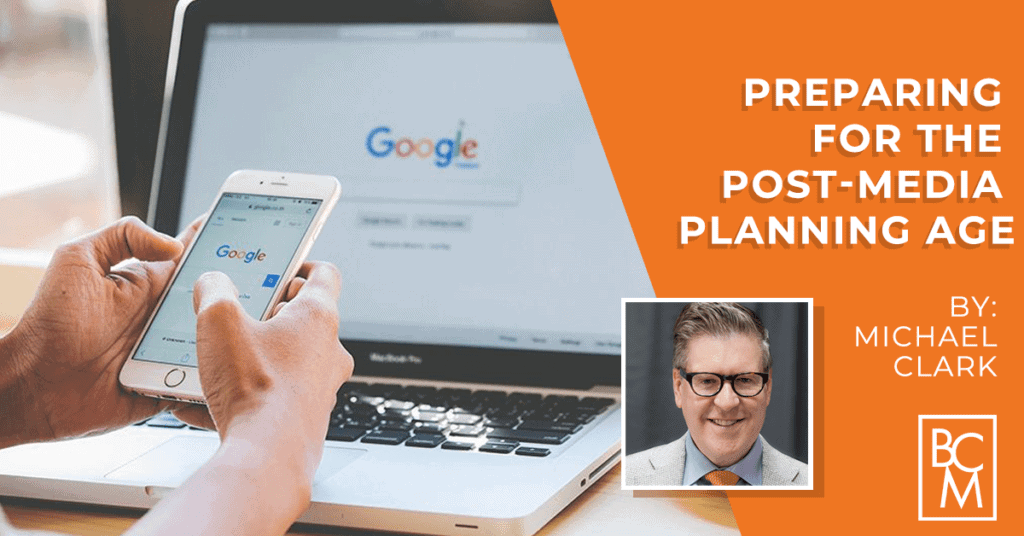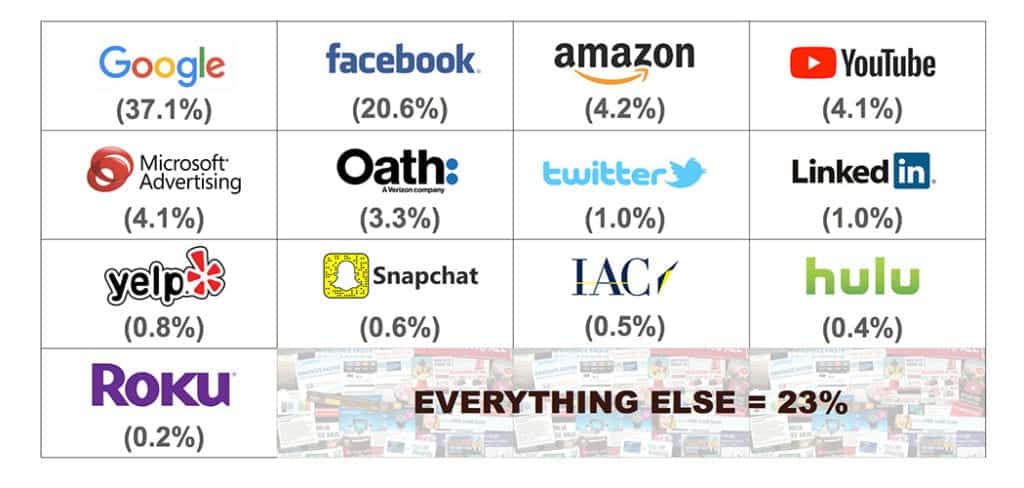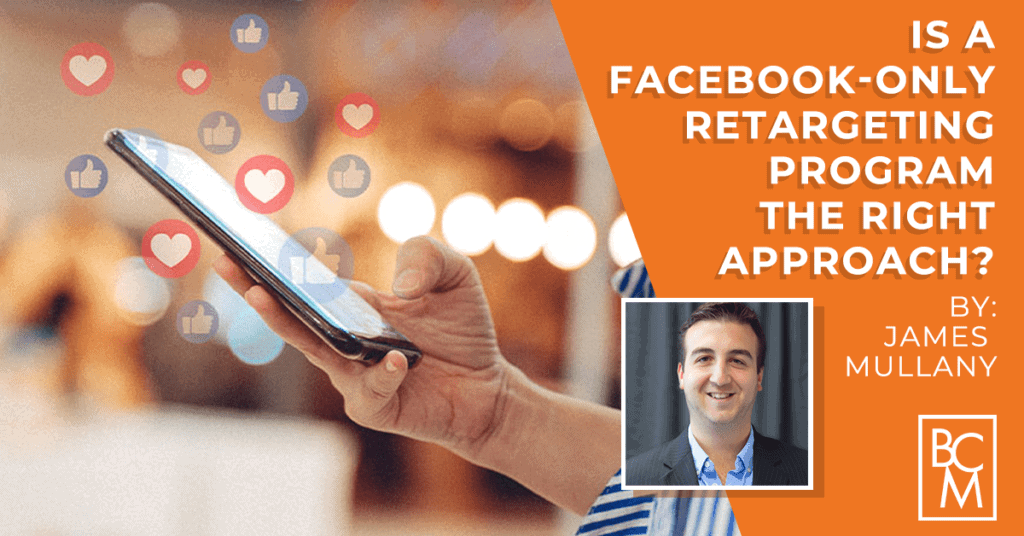

By Michael Clark
We are beginning to see greater separation between advertising winners and losers. The winners know what to pay for audience attention, the losers are content with guessing. Or, worse, they just stick with the methods or plans that they have been using for years and asking few questions. At best, this leads to missed opportunities to grow household penetration or direct sales, relative to the competition. At the very worst, significant competitive separation and long-term disadvantage sets in that cannot be overcome with more spending later.
Knowing what to pay for consumer attention and influence and where best to obtain that attention has been the realm of Media Planners. Historically, media planning has been the art and science of selecting the right mix of channels and media properties to drive the most effective level of reach and frequency for the budget. A big part of media planning has been about the media, or rather the content, acting as a draw for the audience we wanted to reach. So, if we wanted travel consumers, we bought on travel websites or in travel publications or advertised in airports or within in-flight magazines to reach frequent travelers. Reach was achieved by adding more outlets, publications and websites.
Introducing Audience Planning
Audience Planning is an evolution to media planning where the primary consideration is the consumer herself and reaching that consumer through the devices, content feeds and content streams that they prefer and control. This is a fundamental shift from planning where the primary consideration was the publisher and the publisher’s scheduled delivery of content.
The new wrinkle in this decades long process is the impact of the network effect. As we all know, the value of platforms such as Facebook, Instagram, YouTube and Amazon, etc. increase along with the number of other consumers using them. Consumer media consumption habits organized around fewer large platforms and the corresponding consolidation of advertising dollars have been the result of the network effect. Media plans, particularly in digital, are suddenly not that interesting. The diagram below summarizes eMarketer’s US Digital Ad Spend by Platform, with the numbers in parentheses representing the percentage of the total. Any surprises here? Not really.

Take a guess at what your media plan is going to look like. Take a guess at what your competitors’ media plans are going to look like. Your digital media plans probably have not changed that much over the past three years (even with the annual fees paid to your media agencies). I would also suggest that if your media plan contains something other than the 13 logos above, that you examine it very, very closely. Most combinations of the above platforms will reach just about any consumer group at scale that you will need to grow your business. But, if all media plans look fairly similar, then how do you win? How do you create competitive separation?
The Difference Between Audience Planning And Media Planning
Knowing what to pay for consumer attention and influence and how best to obtain that attention is now the realm of Audience Planning. Audience Planning is a bit different than Media Planning in many respects. Chiefly, media planning is about the media or the placement or the impression. Media planning is about the proxies that suggest the opportunity to engage with a consumer. Audience planning, conversely, is about the individual consumer and their values, purchase behaviors, device id’s, their actual identity. There are no proxies. Audience Based Planning is the art and science of weaving 1st, 2nd and 3rd-party data together to generate identity-based audiences and segments. Sticking with the business planning behaviors and processes of media planning is a mistake for most modern advertisers.
This media planning process that I am describing usually begins with the dreaded Personas. Personas, more or less being copywriting exercises built around high-level demographic information and the biased aspirations of who the marketer would like their idealized customers to be. The media agency then takes this information and comes back with media plans showing how the demo indexes with media partners they have selected along with CPM’s and Impressions. This traditional type of process either ignores or outsources the critical details of audience planning and will not provide competitive separation or advantage. This is not what the emerging class of advertising winners are doing.
Improving Your Performance With Audience Segment Data
The winners are not comfortable simply handing their media agencies or media partners personas. The winners go much further into the details of their audiences and own all aspects of audience and segment definition. Rather than receiving a power point slide describing personas, the media agency or your media partners receive the actual real audience segments as defined by device ID’s, cookies and customer id’s (through your client-controlled DMP). Your audiences are no longer defined by publishers’ or agencies’ demographic and psychographic interpretations. The audiences are defined by you and are based on real identity data rather than proxies. And, yes, your media agency will become more of an executional partner (if not replaced by your own internal media team, at some point). And, yes, you will need data platforms and marketing cloud technology to compete.
As you think about ways to improve your performance in 2019, think about taking ownership of Audience Planning. Think about directly owning the ongoing connection with your audiences rather than having agencies or media properties be the guardians and proxy definers of your potential customers. Think about how owning your audience planning process and segments enable you to build competitive separation. After all, these will be your proprietary audiences, that you will be able to value over time, not just open market impressions that any competitor can buy. Finally, think about the institutional knowledge that you will build about your market that is independent of any media partner or agency.
We are in the post-Media Planning age. We are in the new era of Audience Planning. Own it!
Frequently Asked Questions: Audience Planning in the Post-Media Planning Age
-
What is the difference between Audience Planning and traditional Media Planning?
-
Media Planning focuses on choosing channels and publishers to maximize reach and frequency, often relying on proxies like demographics and placements.
-
Audience Planning shifts the focus to the individual consumer, using real identity data (device IDs, cookies, customer IDs) to create precise audience segments rather than relying on broad personas or publisher data.
-
-
Why is Audience Planning considered the “post-media planning age”?
-
Audience Planning represents an evolution beyond traditional media planning. With consumer attention concentrated on major digital platforms and driven by network effects, media plans often look similar. The true competitive edge now comes from owning and defining proprietary audience segments rather than just purchasing impressions across standard platforms.
-
- How does Audience Planning provide a competitive advantage?
- It reduces reliance on or publishers’ interpretations of your audience.
- Advertisers own first-party audience data and leverage it for precision targeting.
- Proprietary segments built from real identity data create long-term market separation that cannot be easily replicated by competitors.
- What role does data play in Audience Planning?
- Data is the cornerstone. Audience Planning weaves together first-party, second-party, and third-party data to create identity-based segments. Instead of generic personas, advertisers rely on:
- Customer IDs from CRM and DMP systems
- Device IDs and cookies for targeting precision
- Behavioral and transactional data to refine messaging
- Data is the cornerstone. Audience Planning weaves together first-party, second-party, and third-party data to create identity-based segments. Instead of generic personas, advertisers rely on:
- Why are traditional personas no longer enough?
- Personas are often high-level, demographic-based profiles built on assumptions. While they can inform creative direction, they fail to provide the granular identity-based insights required for modern digital targeting. Personas are proxies; Audience Planning demands real, verifiable audience data.
- Do advertisers still need media agencies in the Audience Planning era?
- Absolutely. While Audience Planning shifts more control of data and audience definitions toward the advertiser, media agencies remain critical strategic partners. Their value extends far beyond execution:
- Strategic Audience Development: Agencies bring cross-industry intelligence and access to advanced tools that most brands cannot efficiently manage alone. They help refine identity-based audiences by combining first-party brand data with broader third-party and platform insights.
- Cross-Channel Orchestration: Agencies ensure consistency across channels and platforms, aligning media investments with audience behavior patterns. They bring the expertise to balance budgets, optimize frequency, and maximize ROI in complex, multi-touchpoint environments.
- Technology & Platform Expertise: Agencies stay at the forefront of evolving ad tech, data management platforms (DMPs/CDPs), and regulatory shifts (such as privacy changes and cookie deprecation). This ensures advertisers avoid costly missteps and stay compliant while remaining competitive.
- Scalable Creative & Campaign Execution: Agencies not only execute campaigns but also adapt creative for diverse formats, monitor performance in real time, and rapidly iterate strategies based on audience response.
- Institutional Knowledge & Benchmarking: Because agencies work across multiple industries, they provide advertisers with benchmarking data and market intelligence that would be difficult to replicate in-house.
- Absolutely. While Audience Planning shifts more control of data and audience definitions toward the advertiser, media agencies remain critical strategic partners. Their value extends far beyond execution:
In short, Audience Planning empowers brands to take greater ownership of data, but agencies remain the essential partner to translate that ownership into scalable, competitive, and measurable success.
- What tools or technology are required for successful Audience Planning?
- Data Management Platforms (DMPs) or Customer Data Platforms (CDPs)
- Marketing cloud technology for segmentation and automation
- Analytics platforms to measure engagement and conversions
- Strong first-party data collection strategies (loyalty programs, CRM, site/app tracking)
- What’s the long-term benefit of Audience Planning?
- By owning audience definition and planning, brands:
- Build proprietary, high-value audience assets.
- Create competitive separation that grows stronger over time.
- Establish sustainable performance improvements in both reach and ROI.


